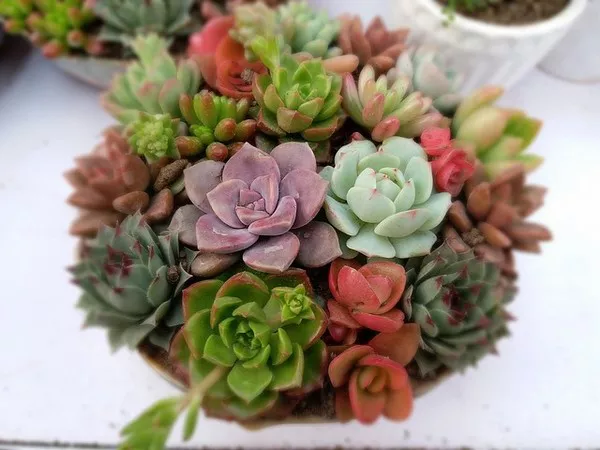Succulents have become increasingly popular in interior décor, thanks to their unique shapes, vibrant colors, and low maintenance requirements. Indoor gardening with succulents not only adds a touch of nature to your living space but also offers a therapeutic and rewarding experience. Whether you’re a seasoned plant enthusiast or a novice gardener, this comprehensive guide will provide you with the essential steps to successfully plant and care for succulents indoors.
Choosing the Right Succulents
The first step in cultivating indoor succulents is selecting the right plants for your environment. Consider factors such as light availability, temperature, and humidity. Some popular indoor succulents include Aloe vera, Echeveria, Haworthia, and Jade plants. Opt for varieties that are well-suited to indoor conditions and are known for their resilience.
Selecting the Right Containers
Choosing the right containers is crucial for the health and aesthetics of your indoor succulent garden. Ensure that your containers have drainage holes to prevent waterlogged soil, a common issue with succulents. Porous materials like terra cotta or ceramic pots are ideal as they allow excess moisture to evaporate, preventing root rot. Additionally, selecting containers with a depth of at least 2 inches will provide ample space for the succulent’s root system to thrive.
Using the Right Soil Mix
Succulents thrive in well-draining soil to prevent water retention, which can lead to root rot. Create a suitable potting mix by combining equal parts of potting soil and perlite or coarse sand. This blend promotes proper aeration and drainage while providing the necessary nutrients for your succulents to flourish. Pre-packaged succulent mixes are also available, ensuring an optimal environment for your plants.
Planting Your Succulents
Once you have selected the right succulents, containers, and soil mix, it’s time to plant them. Follow these steps for a successful planting process:
- Fill the container with the prepared succulent potting mix, leaving about an inch from the top.
- Gently remove the succulent from its nursery pot, being cautious not to damage the roots.
- Place the succulent in the center of the container, ensuring the top of the root ball sits slightly below the rim of the pot.
- Add more soil around the sides until the succulent is secure, but avoid burying the plant too deep.
- Water the succulent lightly to settle the soil, and allow it to adapt to its new environment.
Light Requirements
Proper lighting is crucial for the health and growth of indoor succulents. Most succulents prefer bright, indirect light, while some varieties can tolerate direct sunlight. Place your succulents near a south or west-facing window where they can receive sunlight for at least 6 hours a day. If natural light is insufficient, supplement with artificial grow lights to ensure your succulents thrive.
Watering Guidelines
Overwatering is a common mistake in succulent care. These plants are adapted to arid conditions and prefer infrequent, deep watering rather than frequent shallow watering. Allow the soil to dry out completely between watering sessions, typically every 2-3 weeks. Ensure that excess water drains from the pot to prevent waterlogged soil, which can lead to root rot.
Monitoring Temperature and Humidity
Indoor succulents generally thrive in temperatures between 60°F to 80°F (15°C to 27°C). Keep your succulents away from drafts and sudden temperature fluctuations, as they can stress the plants. Additionally, succulents prefer low humidity, so avoid placing them in areas with high moisture levels, such as bathrooms.
Fertilizing Succulents
Succulents have modest fertilizer needs, especially compared to other houseplants. During the growing season (spring and summer), fertilize your succulents with a balanced, water-soluble fertilizer diluted to half the recommended strength. Apply the fertilizer every 4-6 weeks to support healthy growth. Avoid fertilizing during the dormant winter months when succulents require less nutrients.
Maintenance and Troubleshooting
Regular maintenance is key to ensuring your indoor succulents thrive. Monitor your plants for signs of pests, such as spider mites or mealybugs, and address issues promptly. Remove any dead or yellowing leaves to encourage new growth. Additionally, consider rotating your succulents periodically to ensure even exposure to light and promote symmetrical growth.
See Also Do Plants Have Organs?
Conclusion
Cultivating succulents indoors can be a fulfilling and enjoyable experience, bringing a touch of nature into your living space. By following the steps outlined in this comprehensive guide, you’ll be well-equipped to create a thriving indoor succulent garden. From choosing the right succulents and containers to providing proper lighting and watering, these essential tips will guide you towards success in your indoor gardening journey. Embrace the unique beauty of succulents and enjoy the tranquility they bring to your home.


